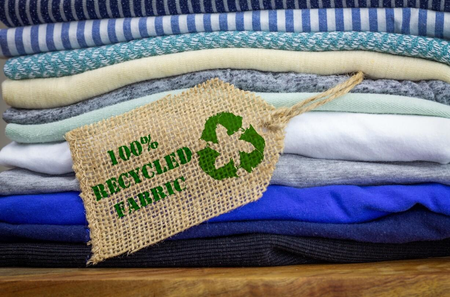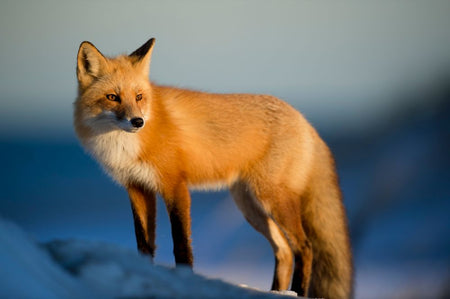Over the recent years, a rise in sustainable fashion has been observed widely. The phrase not only sounds environmental-friendly but serves a purpose that contributes to sustainable development.
What is Sustainable Fashion?
Sustainable fashion is the process of making garments without posing any damage to nature. This is done in a manner that is ecologically, socially, and ethically harmonious to all living beings, including nature. Alternatively, sustainable fashion is also referred to as eco-fashion. It is more concerned with the entire activity of cloth production, raw materials used, the life span, and biodegradability.
The fashion industry is reported to be the second-largest polluter, globally, closely following the oil industry. Due to quickly changing trends, there is a continuous race to keep up with fast fashion. Hence, clothing is produced at lower costs and in bulk due to the increased demands fueled by trendsetters. Each stage to generate fast fashion increase pollution – production, use, and disposal. The consumer is misled into believing that fashion is disposable.
What Fabrics are Not Vegan?
Sustainable or eco-friendly fashion goes hand in hand with the highest standards of ethics. This means that materials for making fabrics should not include those obtained from predatory practices. Some of these materials are:
-
Leather
-
Plastic
-
Wool
-
Bone
-
Animal-based dyes
-
Fur
Why Sustainable Fashion is important?
Sustainable fashion is a broad term that includes producing fashion more responsibly. Following are the four reasons why you too would want to shift to making sustainable fashion choices.
-
Helps Reduce Environmental Pollution
Choosing eco-friendly fashion means you are helping to reduce pollution that is a result of fashion. Since these brands are more quality-focused, the products used are more environment-friendly. Regulating the origin of the raw materials is possibly one of the ways to reduce greenhouse gas emissions thus protecting our environment.
-
Clothing is Cruelty-Free
The use of both plant-based and man-made fibers means no animals are slaughtered for the purpose. Fast fashion makes use of slaughtering practices that is not only painful for animals but lead to the extinction of exotic animal species.
-
Non-Toxic Garments are Produced
Much care is taken into producing manufactured garments that are not harmful to the skin. In addition to the fabric used, at times additives such as dyes and treatment chemicals can end up irritating the skin when worn. Non-toxic elements would ensure that the end product is user and skin-friendly.
-
Good looks that are longer-lasting
Since the products are of high quality, they can be used for a longer time. This also means that the customers need not invest frequently in garments that are viable only for a short time. Ultimately, this helps in less expenditure and a less production demand.

What are Plant-Based Fibers?
An in-depth understanding of the utility of plant-based fibers would help deal with the pollution crisis. Natural plant fibers are sustainable raw materials for manufacturing cloth. The ability of plants to be grown and returned to soil makes plant-based fabrics renewable and biodegradable, thus making them a suitable option for use.
Cotton is a traditional fabric plant with wide-ranging utilities. However, due to the increased use of pesticides and fertilizers, manufacturers are forced to look for safer options. Alternate fabric plants include hemp, flax, coconut, lotus flower, jute, and banana to name a few.
Types of Plant-Based Fibers
Most plant cell walls are made up of cellulose and are the basis of plant-based and man-made textile fibers. Plant-based fibers have to be processed before the final use to be separated from unwanted particles and plant parts. The processing is usually devoid of harmful chemicals, though at times aggressive measures can be used which reduces the product quality, as in the case of bamboo. Fiber is classified into types based on the source of plant part it is obtained from. The four main fiber types include:
1. Bast Fibers

These are sourced from phloem or the inner bark and are thus referred to as phloem fiber. The stem of certain dicotyledonous plants is called the bast and, hence, the bast fiber supports phloem cells and providing them strength. Flax and hemp are classic bast fiber plants.
2. Leaf Fibers
These fibers have increased lignin content and are a durable kind of fabric. These are also referred to as hard fibers and find utility as leather. Fleshy leaf plants such as pineapple and agave are a source of leaf fibers.
3. Fibers from Seeds and fruits

The fibers are usually attached to hairs or even encapsulated in a fibrous ball-shaped husk such as is kapok, coir, and cotton.
4. Wood Fibers
These fibers are stiff since they are obtained from woody trees, bamboo, and grasses, thus, need to be processed to soften them before use. The chemicals used are ensured to be relatively skin-friendly.
What are Man-Made Fibers?
Unlike natural fibers, man-made fibers are either obtained from plant sources referred to as regenerated fibers or from polymers referred to as synthetic fibers. Two of the first man-made fibers – rayon and acetate – were plant-based man-made fibers. Synthetic fibers are made from polymers made entirely in industrial setups – usually from petroleum or natural gas by-products. These can be mass-produced to any set of required properties. The building unit is a monomer that is joined in a chained linear structure to form a polymer.
Types of Man-Made Fibers

Many man-made fibers have found use in clothing and apparel. Mostly are comprised of polymers which are a long-chained structure of monomers. The different compound monomers are used based on their attributes that are desirable in the end product. Man-made fibers have a greater variety range since the number of monomers and their characteristics can be tweaked as per need. Some of the basic man-made fibers include:
-
Rayon
The fiber is mainly comprised of cellulose. Initially called Chardonnet silk after a French inventor by the same name, he found that nitrocellulose fibers from cotton or wool pulp can be changed to smooth, shiny cellulose fiber. Later on, it came to be known as rayon once commercial production began.
-
Nylon
It is usually, but not always, manufactured as fiber and is composed of high molecular weight polyamides. Developed in America, it was observed that the fiber could be produced from compounds readily available from air, water, and petroleum, or coal. It is found to be highly resistant to heat, wear, and chemicals.
-
Polyesters
Usually derived from petroleum, its basic unit is ethylene. It is common to be blended with other fabric forms before the final fabric shape such as with cotton. This gives the fabric much durability, improves shrinkage and wrinkling capability.
-
Polyvinyl
PVC clothing, made from polyvinyl chloride (PVC), is usually shiny. These contain a backing woven from polyester fibers with a surface coated with shiny plastic extending flexibility to it. With reduced pressure applications, the fabric can be used for a longer time span.
Use of Sustainable Fabrics in Fashion Industry
The textile and fashion industry is gradually realizing that shifting to sustainable options is a necessity. This is especially true in the post-pandemic era where people are in the hunt for germ-free fabric. This is where eco-friendly cloth is deemed desirable. Eucalyptus fiber, for instance, is fine, intricate, and has a longer shelf-life, with healing properties. For performance wear, bamboo fabric has good utility.
On the contrary, man-made fibers are usually high in strength, heat, resilience, and resistance to fungus. These fibers also maintain a pressed shape. Additionally, the characteristics of these fibers can be modified as is required by the consumer. For example, PVC is frequently used in young people’s fashion in the form of jackets. Latex rubber has been seen in the fashion industry as bodysuits, gloves, and stockings.
Conclusion
According to the UN Alliance for Sustainable Fashion, about 8-10% of global carbon emissions come from the fashion industry itself. Fixing this chunk, by shifting to sustainable fabrics, would help step closer to global climate goals by decarbonizing the environment. The rampant variety of fibers available in both plant-based and man-made fibers opens more doors to experiment with different types of sustainable fabrics and their combinations.







